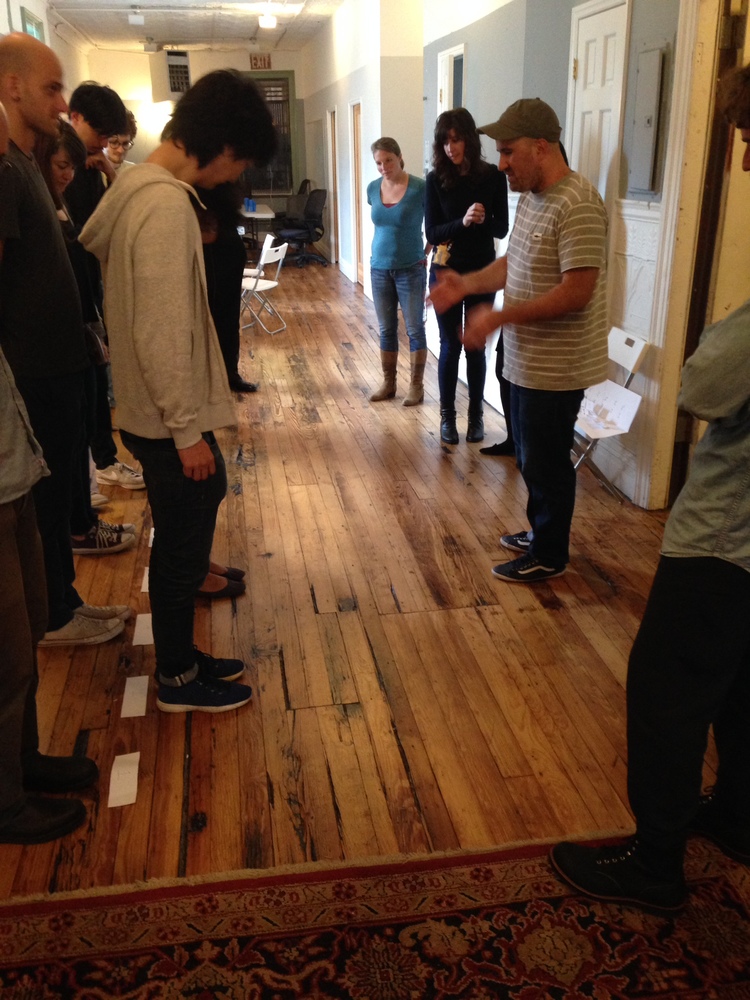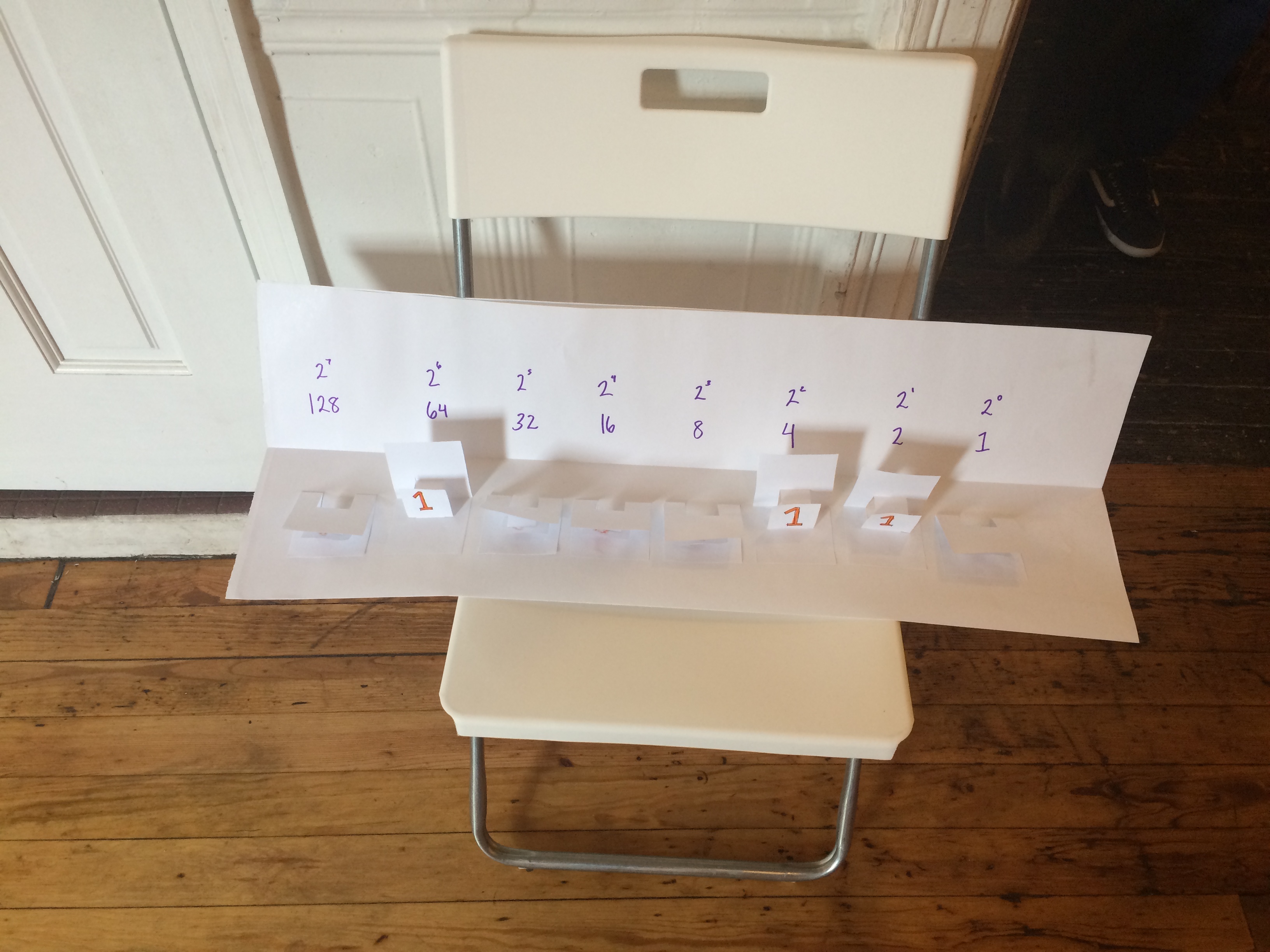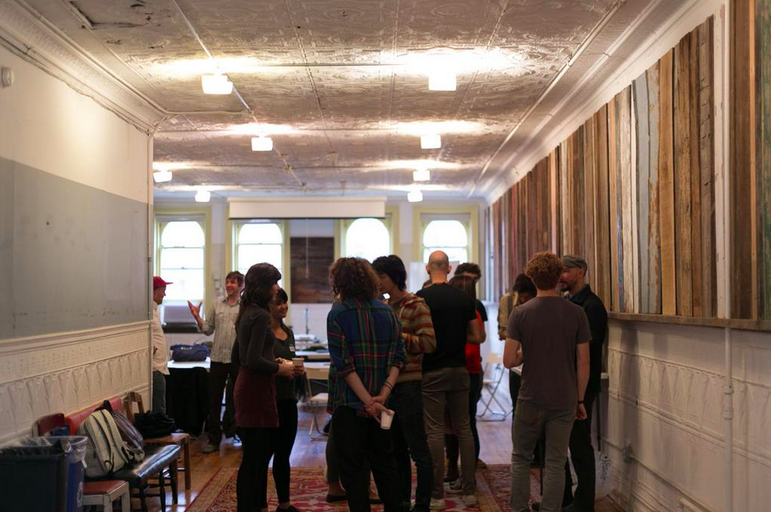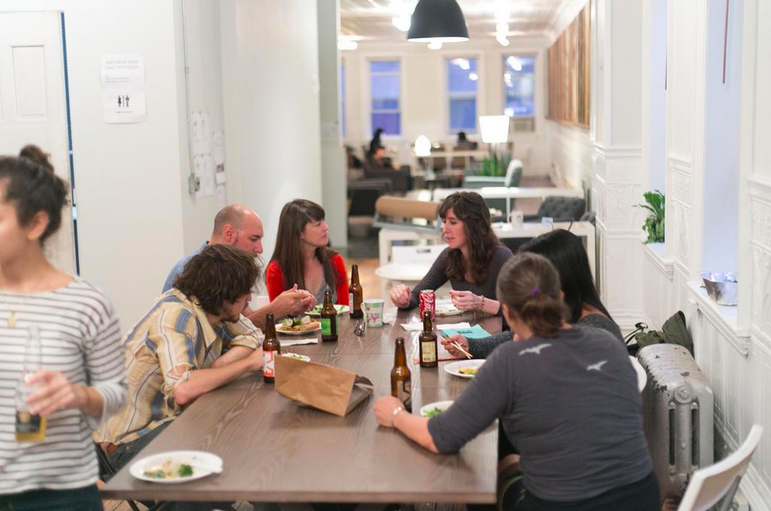-
Tools Intro
Zach gave us a tools lecture today - he basically showed us all of these amazing tools (programming languages) to try out and experiment with. Some were so simplistic, yet they could do so much! He showed us Context Free, NodeBox, SuperCollider, and Chuck. Context Free and NodeBox were viz tools and SuperCollider and Chuck were sound tools. Zach gave us homework to find a tool that noone else is using and experiment with it for the next week.
I played around with The Dasher Project. It’s a way to type without the keyboard and super fun to use. I don’t know that I could make something with it but it was a cool find. I also spent some time exploring paper.js and I ended up drawing a cat with it!

You can find the code on github.
We spent the rest of the day experimenting with the tools and working on our presentations. All of us did a rehearsal of the presentations and then got ready for the welcome party. There were about 100 people who showed up with some pretty amazing people in the audience (Jer Thorpe). I was super nervous to present in front of that many people, but it was also sort of exhilarating at the same time! So glad I did it but so glad it’s over. I also received a lot of really supportive encouragement from other students which was really nice. It was such a great week!
-
Binary Numbers
Today we started learning about binary numbers with Zach. Starting with the basics. I had learned a little bit of binary numbers in university but didn’t have a good foundation, so this was a great refresher. We learned about the most significant vs the least significant digits. We looked at a visualization that took your webcam picture (in black and white) and visualized it based on each bit: what this means is that the color of each pixel was determined by bit ‘n’ (1 –> 8). We were able to see how the least significant digit holds the least information about the image, as the image created by choosing the pixel color from the least significant digit provided the most ambiguous image. Zan explained it in this way and it really made it click for me, so thank you Zan!
We finished up the day by designing a game/process to teach an 8/80 year old binary numbers. I worked with Zach and Rachel to think about Zach’s idea of using legs to act as on/off switches. We ended up designing a game that required 8 people, 1 to act as each bit in the byte. There were two rules in the game: 1. You can only move forwards and backwards (only alternating –> you can’t move forward twice) 2. you have to make a move when the person to the right steps back. The idea is that the least significant digit is always moving back and forth, and the rest of the places/people follow suit based on the rules. The game is meant to help show how to count up in binary and also to understand how significant each digit is. An alternative to this is to have the people start moving, and then randomly call stop. When stopped, they must say what binary number they are at (but in base 10).

We also supplemented this with a game that helps you create a binary number that is equivalent to a base 10 number. it consisted of a line of ‘switches’ labeled with their 2^n = # starting at 128 and ending at 1. the idea was to take the number given, and start at the left (128) and ask if your number was lower, if yes, then flip the switch on, if no, go on. Each time you flip a switch, you subtract the number on the switch from your number and keep a running total until you get to zero. Once at zero, you are done, and you can see your binary number based on which switches are flipped.

-
First Day at the School for Poetic Computation
Today was my first day at the School for Poetic Computation [SFPC], and it was amazing! It started with basic mingling and administration stuff, but I can’t articulate my excitement for what’s in the works. One of the founders, Zach Lieberman, said ‘We work for you’ which was surprising, awesome, and extremely refreshing. The amount of ownership we have in this research experiment is pretty empowering. Zach and the other founder, Taeyoon, handpicked this amazing bunch of indivuals which I’m very proud, intimidated, and lucky to be a part of. Everyone is friendly and diverse, coming from a huge range of experience levels, backgrounds, and locations. There are a few students who are coming to America for the first time for SFPC - and I can’t even fathom what that’s like - kudos to you guys! I am surrounded by so many extremely talented artists, designers, coders, and makers, and I’m incredibly excited to learn from all of them. I hope that I can contribute some perspective and expertise as well!



We spent the second half of the day experimenting with human fax maachines. Toru, Meghana, Christos, and I had to design a way to decode and encode an image between two groups of people. We started with simple shapes, graduated to shapes with diagonals, and then with curves. We even thought about freeform shapes as well. It’s amazing what complex images you can translate with such minimal rules!
We finished with a dinner in the 2nd floor kitchen which consisted of homemade salads and himalayan food - it was my first time with himilayan food and it was pretty good! I listened in on a great conversation with Lauren and Christos about their backgrounds and opinions in news/publishing/advertising. Both have some really interesting experience and thoughts about the polictics of those fields. Day one is over and I’ve already learned so much!

Check out our inspiring location at Orbital!